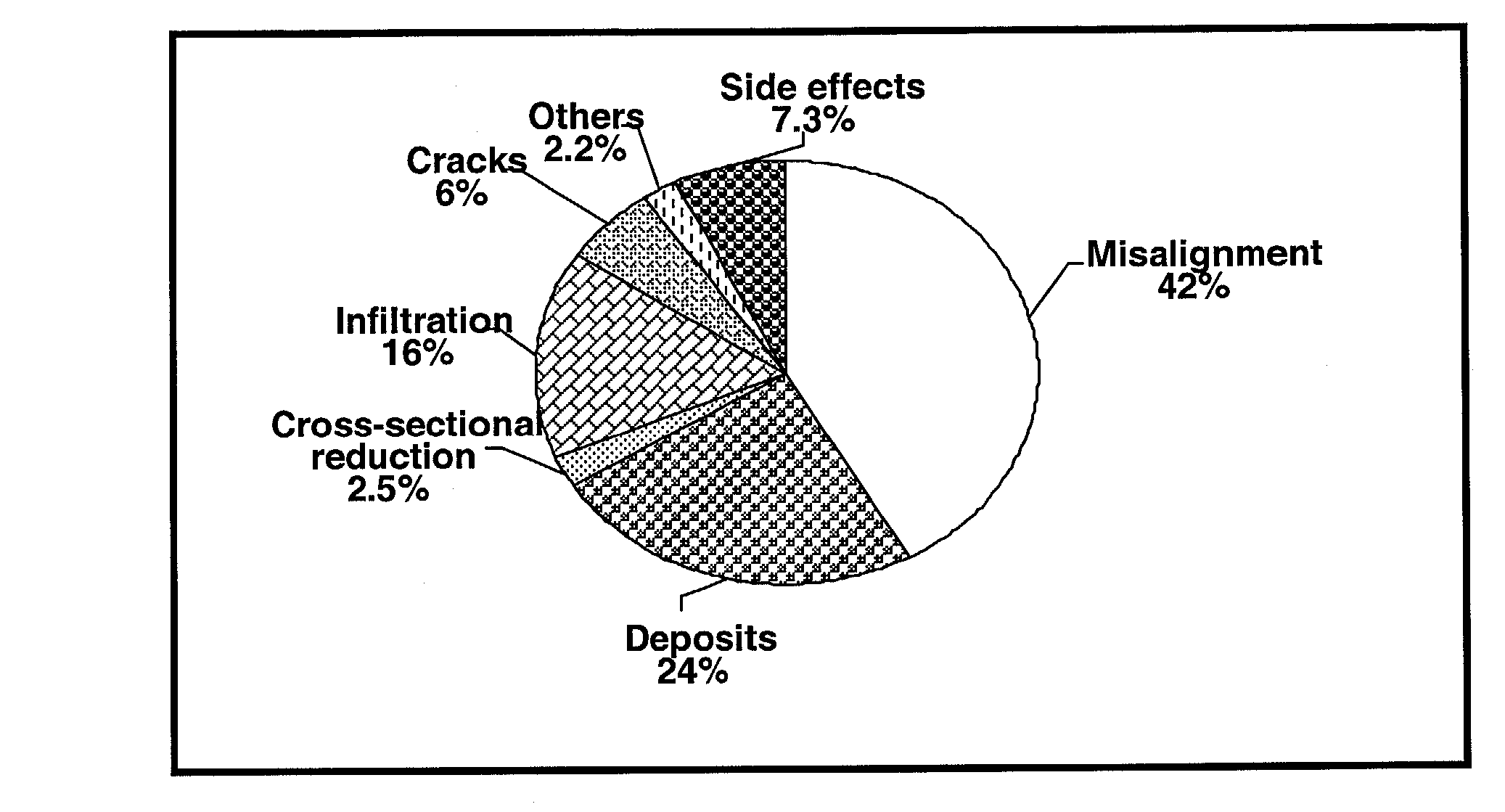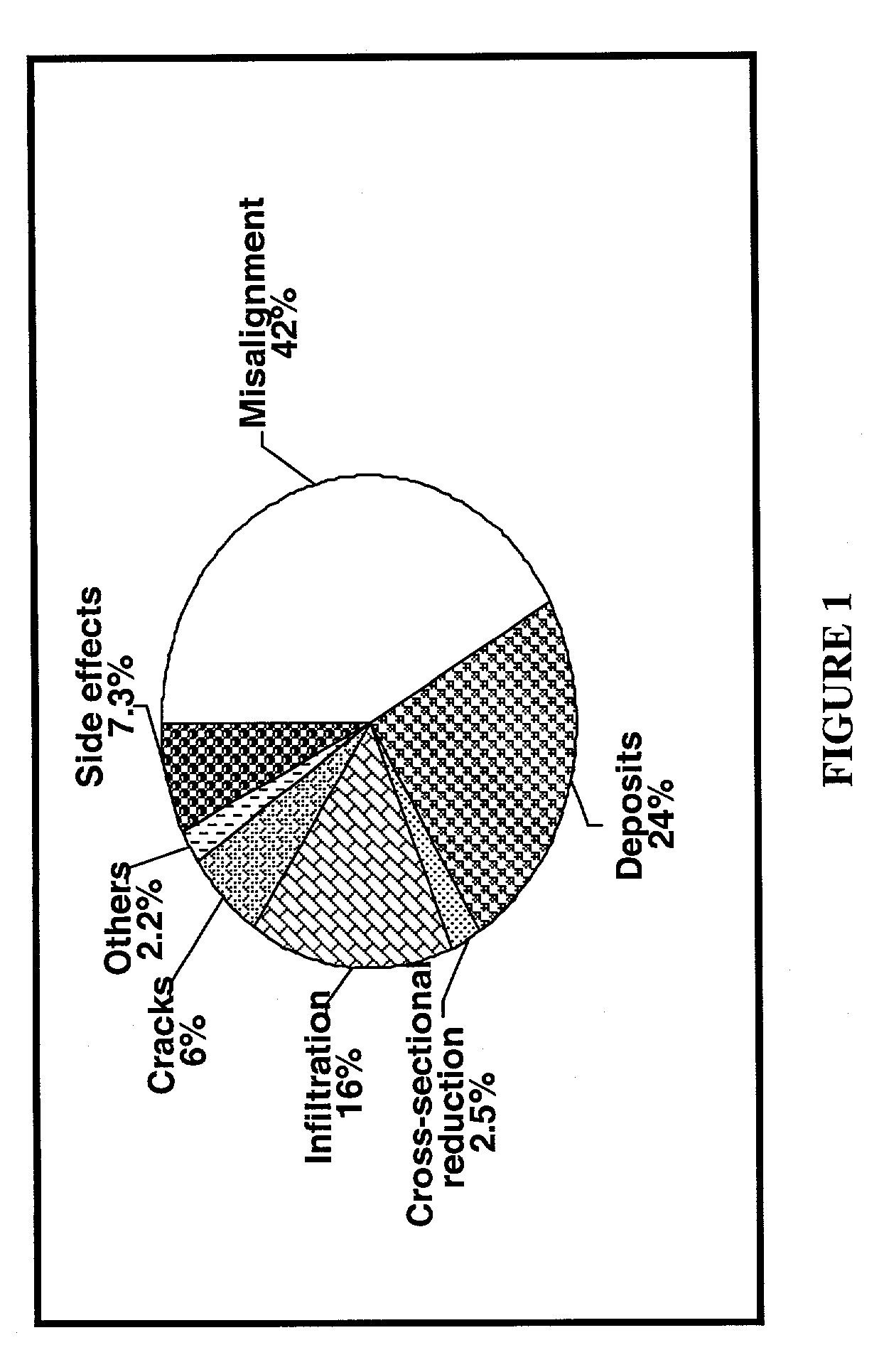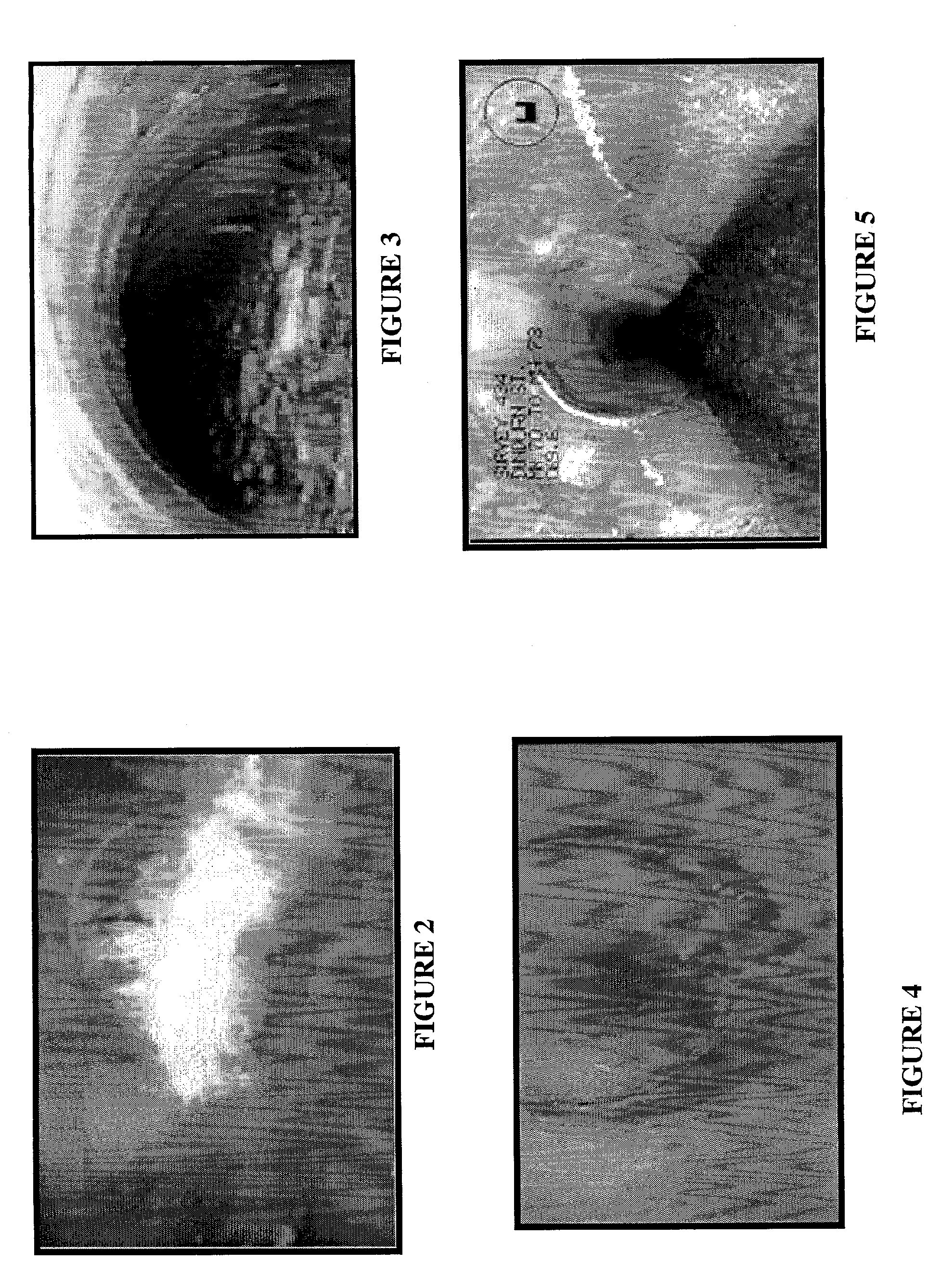Method and apparatus for the automated detection and classification of defects in sewer pipes
a technology of sewer pipes and automated detection, applied in the field of methods and equipment for the automated detection and classification of sewer pipes, can solve problems such as the disappearance of the light
- Summary
- Abstract
- Description
- Claims
- Application Information
AI Technical Summary
Benefits of technology
Problems solved by technology
Method used
Image
Examples
Embodiment Construction
on the Multiple Classifier System and Solution Strategy
[0296] To demonstrate the use and capabilities of the proposed multiple classifier system and solution strategy, images shown in FIG. 2 to 6 were considered. As can be seen cross-sectional reductions in a form of roots, deposits, infiltration, cracks and misalignments are depicted in FIGS. 2, 3, 4, 5 and 6, respectively. To classify these defects, the images were processed three times. In the first pass, the images were processed by sequence of operation number 1 shown in Table B. The purpose of this pass is to detect and classify deposits, cross-sectional reductions and misalignments. The segmented images of these images are shown in FIGS. 57 to 61 below. As can be noticed from FIGS. 57, 58, 59, 60 and 61, 4, 22, 5, 14 and 6 objects were detected, respectively. The extracted features of the images were processed using DepositNet 1, DepositNet 2 and DepositNet 3. The results of these networks are shown in FIGS. 62 to 64. As can ...
PUM
| Property | Measurement | Unit |
|---|---|---|
| diameter | aaaaa | aaaaa |
| diameter | aaaaa | aaaaa |
| diameter | aaaaa | aaaaa |
Abstract
Description
Claims
Application Information
 Login to View More
Login to View More - R&D
- Intellectual Property
- Life Sciences
- Materials
- Tech Scout
- Unparalleled Data Quality
- Higher Quality Content
- 60% Fewer Hallucinations
Browse by: Latest US Patents, China's latest patents, Technical Efficacy Thesaurus, Application Domain, Technology Topic, Popular Technical Reports.
© 2025 PatSnap. All rights reserved.Legal|Privacy policy|Modern Slavery Act Transparency Statement|Sitemap|About US| Contact US: help@patsnap.com



